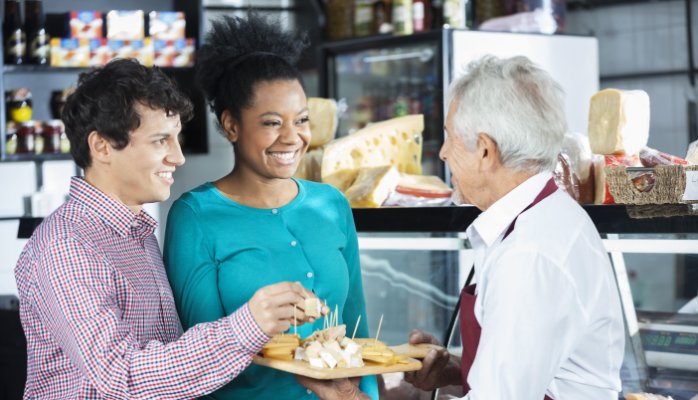We all want to be happy. But how do you consistently make your customers happy?
Experts from companies like Disney and SoulCycle offered good advice on this subject during a panel discussion on designing happiness at SXSW. As customer experience consultants, we know that happiness is one of the key emotions that drives short term purchases and longer term brand loyalty. By designing an experience with the customer’s happiness in mind, brands can turn casual customers into enthusiastic fans.
Anticipation, Experience and Memory
At the creative consultancy Lippincott, they break happiness into three components – anticipation, experience and memory. It turns out that anticipation is important and gives us as much joy as actually experiencing something. In fact, experiences themselves are often imperfect, but we remember the high points and the endings above all else.
Think back to when Apple launched the iPhone and iPad. There was much speculation, and then a keynote address with Steve Jobs showing us everything this amazing shiny new device could do. By the time the product was available for sale, there were long lines outside the Apple Store. That’s the power of anticipation.
I waited in one of those lines, and I actually have positive memories of the experience. Apple employees came out to chat with us. They handed out bottles of water and tickets so we’d be assured of getting the product we’d been waiting for. A guy from Ben and Jerry’s came over with free ice cream. When the store opened, a sea of enthusiastic employees applauded. My purchase was quick and effortless. And when I left, the employees at the door applauded my success.
This customer journey – from initial anticipation through the peak experience to the end of a transaction – is what we focus on when we design customer experiences. We use tools like Customer Mirrors and Emotional Signature to find out what customers are feeling and how our clients can create happiness and other positive emotions.
We’ve found that the peak, the ending and the memory are absolutely key. I discuss this in depth in my new book, The Intuitive Customer, to be released this summer.
Transitions
Both Disney and SoulCycle give customers a moment to transition from the outside world. At Disneyland, they pass through a gate. At SoulCycle, it’s a hallway lined with lockers. These sorts of transitions are vital to creating a sensory journey.
Universal Studios also does this well. To get to their theme park in Orlando, you must walk through CityWalk, an oversized retail and restaurant complex that feels a little like Times Square. It’s clearly a different environment, and it prepares people for a day of rides and experiences. More transitions wait inside the park, as ride lines snake through movie-themed rooms. People waiting for a Harry Potter ride walk through Gringott’s bank and can see talking goblins. This creates anticipation for the ride and makes waiting in line interesting and memorable.
Empowering Employees
Another point raised at the SXSW talk was the importance of empowering employees to do what’s necessary to make customers happy. We’ve all dealt with a customer service representative who shrugged and said “I’m sorry, sir, but there’s nothing I can do about it.” I daresay that didn’t make any of us happy.
Compare that to my recent experience at a local takeout restaurant, where I ordered and they gave me a handheld buzzer so I’d know when my food was ready. After 20 minutes and no buzzing, I went up to the counter. My food had been sitting there for awhile, I just wasn’t told. The smart staff handed me my takeout bag and a coupon for $10 off my next visit. My irritation turned to pleasure.
People Love Surprises
Part of the reason that empowered employees make such a difference is that they can surprise customers. Pleasant surprises are fun, and that’s why I was so pleased with my $10 takeout coupon. And happy surprises are quite effective at turning around a negative experience.
However, surprises don’t have to be a response to an event. They can be anything that makes an ordinary event memorable. Free samples with a purchase. Chocolates on the hotel room pillow. It’s easy – make them happen and make your customers happy!
When was the last time you felt pleasantly surprised as a customer? Tell everyone about it in the comment box below.
If you found this article useful these blogs will also be of interest:
Check Out, Check In Or Drop Out – The Customer Experience In Lines
Kate Spade Revamps Retail Experiences to Deliver Brand Values
Is Your Customer Experience Accidental
Find out more on how you can improve your Customer Experience and ultimately your sales in our latest ebook Unlocking The Hidden Customer Experience.
LinkedIn followers can claim 50% discount with Hidden50 promo code.


